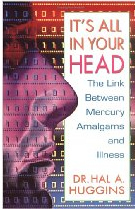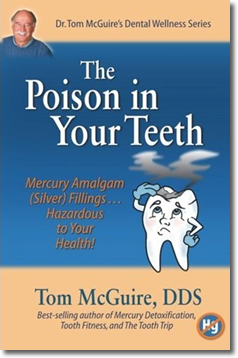Mercury Toxicity as an Autoimmune Disorder
Medical research examining the connection between mercury exposure and autoimmune conditions
Authors: Keith W. Sehnert, M.D. • Gary Jacobson, D.D.S. • Kip Sullivan, J.D.

⚠️ Important Medical Disclaimer
This article presents research and theories about mercury toxicity and autoimmune disorders. These views remain controversial in the medical community. The relationship between dental amalgams and systemic health is actively debated among medical and dental professionals.
Always consult qualified healthcare professionals before making decisions about dental treatment or mercury exposure. Multiple perspectives should be considered for any health decisions.
Research Disclaimer: This information represents specific research perspectives and should not replace professional medical advice. Mercury toxicity and autoimmune disorders require comprehensive medical evaluation. View full disclaimer.
Understanding Autoimmune Disorders
The diagnostic arena of autoimmune disorders encompasses what researchers describe as "alphabet soup" of conditions where the immune system mistakenly attacks the body's own tissues.
Common Autoimmune Conditions
Additional Suspected Conditions
- • Crohn's Disease
- • Raynaud's Disease
- • Systemic Candidiasis
- • Type 1 Diabetes
- • Alzheimer's Disease
- • Mercury Toxicity (?)
Common Autoimmune Symptoms
Patients with autoimmune disorders often present with multiple symptoms that affect various body systems:
Physical Symptoms
- • Generalized morning stiffness
- • Joint pain and swelling
- • Skin rashes
- • Subcutaneous nodules
- • Lymph node swelling
Systemic Effects
- • Chronic fatigue
- • Immune dysfunction
- • Dry eyes and mouth
- • Environmental sensitivities
- • Depression
Neurological Signs
- • Ringing in ears (tinnitus)
- • Burning sensations
- • Numbness
- • Cognitive changes
- • Memory problems
Clinical Assessment: These symptoms typically indicate connective tissue disorders resulting from immune system dysfunction, where T-lymphocytes, B-cells, and other immune elements attack the body's own tissues instead of foreign invaders.

Mercury in Dental Amalgams
Dental fillings that appear silver when new but turn gray or black over time typically contain approximately 50% mercury, with the remainder being copper, silver, tin, and zinc. Despite being called "silver fillings," these amalgams would be more accurately described as "mercury fillings."
Amalgam Composition
Common Amalgam Types:
- • Dispersalloy® (43-54% mercury)
- • Spheraloy® (43-54% mercury)
- • Sybralloy® (43-54% mercury)
- • Tytin® (43-54% mercury)
Typical Composition:
Lifespan: These fillings typically survive 8-12 years in the human mouth, appearing silver initially but turning gray/black over time.
Research Evidence
Comparative Health Study
Study Design: 50 subjects without amalgams compared to 51 subjects with amalgams
Increased Symptoms in Amalgam Group:
- • Greater chest pain incidence
- • More tachycardia
- • Higher anemia rates
- • Increased fatigue
- • Greater tendency to tire easily
Measurable Differences:
- • Significantly higher blood pressure
- • Lower heart rate
- • Lower hemoglobin levels
- • Overall poorer health markers
University of Calgary Animal Studies
Researchers: Vimy, Takahasi, and Lorscheider at University of Calgary Faculty of Medicine
Sheep Study Results:
Pregnant sheep with new silver amalgams showed elevated mercury levels in their fetuses within just two weeks of filling placement.
Monkey Studies:
Similar findings confirmed in primate studies, demonstrating rapid systemic mercury distribution from dental amalgams.
Alzheimer's Disease Case Study
Case: 82-year-old woman from St. Paul with confirmed Alzheimer's disease
Mayo Heavy Metals Lab Results: Brain tissue showed 5.3 µg/g mercury (53 times normal levels). Pathologist found characteristic "neurofibrillary tangles" common in Alzheimer's patients. Subject had multiple amalgam fillings.
International Response & Regulations
Sweden (1994)
Historic Decision: On February 18, 1994, mercury fillings were banned for children and youth under 19 years of age.
Rationale: Evidence showed mercury amalgams to be a trigger of autoimmune disorders.
Germany - Degussa AG
Corporate Decision: Degussa AG, Germany's largest dental amalgam producer, announced they would no longer provide amalgams.
Reason: Pending and future lawsuits based on Federal Court ruling that dentists using amalgams face legal liability.
European Research
Dr. Catherine Kousmine (France)
Reported that illnesses like MS and chronic polyarthritis (both autoimmune diseases) are triggered by silver amalgams. Documented in her book "La Sclerosa and Plaques Est Guerissable" (Multiple Sclerosis is Curable).
British MS Study
Highest MS incidence found in Northern Ireland and Scottish Islands of Orkney and Shetland — the same regions with the highest rates of dental cavities and fillings.
United States
California Proposition (1994)
Passed legislation requiring warnings in dental offices stating that mercury in dental amalgam "causes birth defects and other health problems."
*Note: Law contested by ADA and California Dental Association, tied up in Federal Court.
EPA Declaration (1989)
Environmental Protection Agency declared amalgams a hazardous substance under Superfund law.
Mercury Amalgam Bans & Phase-outs
Historical Perspective: The Mercury Debate
Early Development (1800s)
Timeline:
- Early 1800s: French dentists first mixed mercury with metals
- 1819: Bell (England) developed high-mercury amalgam
- 1826: Taveau (France) created similar mixture
- 1833: Crawcour brothers introduced amalgams to US
Etymology Note:
"Quack" Origins: In Germany, mercury was called "quick silver." The German pronunciation of "quick" is "quack." Dentists using mercury were called "quacks" — now meaning "ignorant pretender to medical skill."
Early Professional Opposition
American Society of Dental Surgeons (1840)
Unprecedented Action: Required members to sign pledges promising NOT to use amalgams.
Opposition was so strong that this early professional stance was taken against mercury use.
1848 Disciplinary Action
Society found 11 New York members guilty of "malpractice for using amalgam" and suspended them. Internal debate over this issue led to the Society's demise in 1856.
American Dental Association Formation
The successor organization sought to unite dentists and initially did not take a stand on amalgam safety. Encyclopedia Britannica notes amalgams "were not altogether in good repute until after 1895."
Modern Revival of Debate
Key Events Leading to Current Debate:
- • 1989: EPA declares amalgams hazardous under Superfund law
- • December 1990: CBS "60 Minutes" devastating critique
- • 1991: FDA hearing, NIDR conference, Public Health Service review
Industry Response:
"Switchboards lit up at state dental societies, dental schools, and the American Dental Association." The ADA received calls from two dozen reporters and launched extensive counter-campaigns.
Critical Mercury Facts
Toxicity Statistics
Mercury Toxicity Ranking
Most toxic non-radioactive element on Earth
Typical Amalgam Content
Average filling: 1 gram total
Mercury content: 0.5 grams (52%)
Average Adult Exposure
Typical adult: 10 amalgam fillings
Total mercury: ~5 grams
Environmental Comparison
0.5g mercury in 10-acre lake = fish advisory issued
Regulatory Context
Minnesota Legislature (1994)
Banned running shoes with mercury lights in heels because they contained 0.5 grams of mercury — considered dangerous to public health.
Note: Same amount of mercury as in one typical dental filling.
European Phase-out Schedule
Germany, Austria, Denmark, and Sweden have implemented bans or scheduled phase-outs of mercury amalgam use in dentistry.
How Mercury Escapes
Mechanism: Mercury escapes from fillings as vapor created by chewing, then enters the bloodstream and is distributed to all body parts, including the brain.
Evidence: People with mercury fillings consistently show higher levels of mercury in urine, blood, and brain tissue compared to those without fillings.
Authors' Research Conclusion
"It is our conclusion that mercury toxicity is an autoimmune disorder. Its wide range of symptoms can only be accounted for by multiple adverse effects on the immune system, nerve tissue and connective tissue in general."
Authors: Keith W. Sehnert, M.D., Gary Jacobson, D.D.S., Kip Sullivan, J.D.
Published in: Advance Magazine, January 1995
Important Context
This represents the authors' research perspective based on their analysis of available evidence. The relationship between mercury exposure and autoimmune disorders remains an area of ongoing scientific investigation and debate within the medical community.
Research Correspondence
Keith W. Sehnert, M.D.
6200 Excelsior Blvd., Suite 101
Minneapolis, Minnesota 55416 USA
Scientific References
1. Public Health Service, US Department of Health and Human Services. Dental Amalgams: A Scientific Review and Recommended Public Health Service Strategy for Research, Education and Regulation. January 1993, Washington, DC.
2. Ziff, M. F. "Documented clinical side effect to dental amalgams." Adv. Dent. Res. 1992;1(6):131-134.
3. Vimy, J.D. Takahasi, Y., Lorscheider, F. L. "Maternal-fetal distribution of mercury released from dental amalgam fillings." Am. J. Physiol. 1990;258:939-945.
8. Huggins, Hal H. It's All in Your Head: Diseases Caused by Silver-Mercury Fillings, 4th Ed., Life Sciences Press, 1990.
14. Sehnert, K. W. "Autoimmune Disorders," Advance, January 1995, p. 47-48.